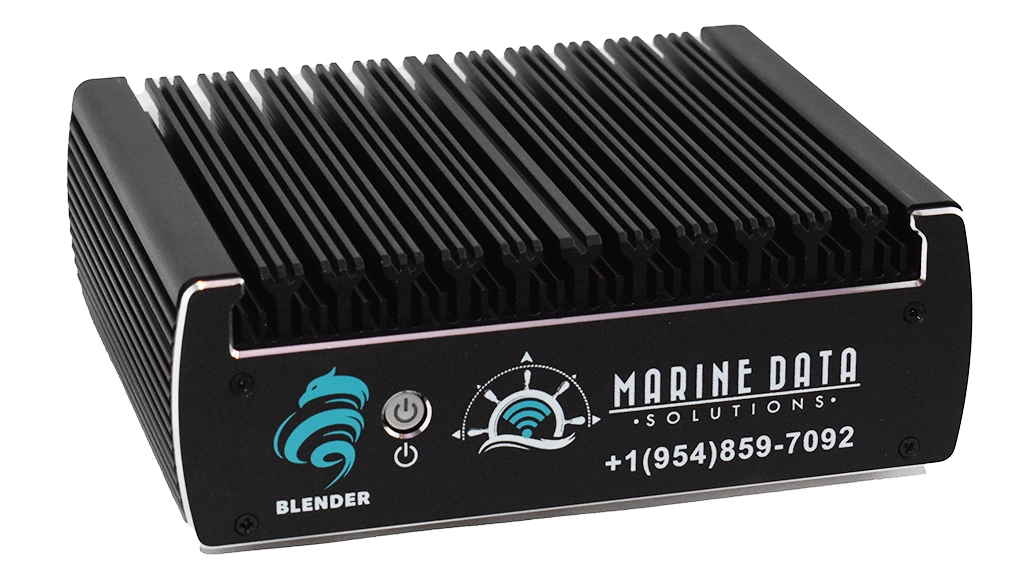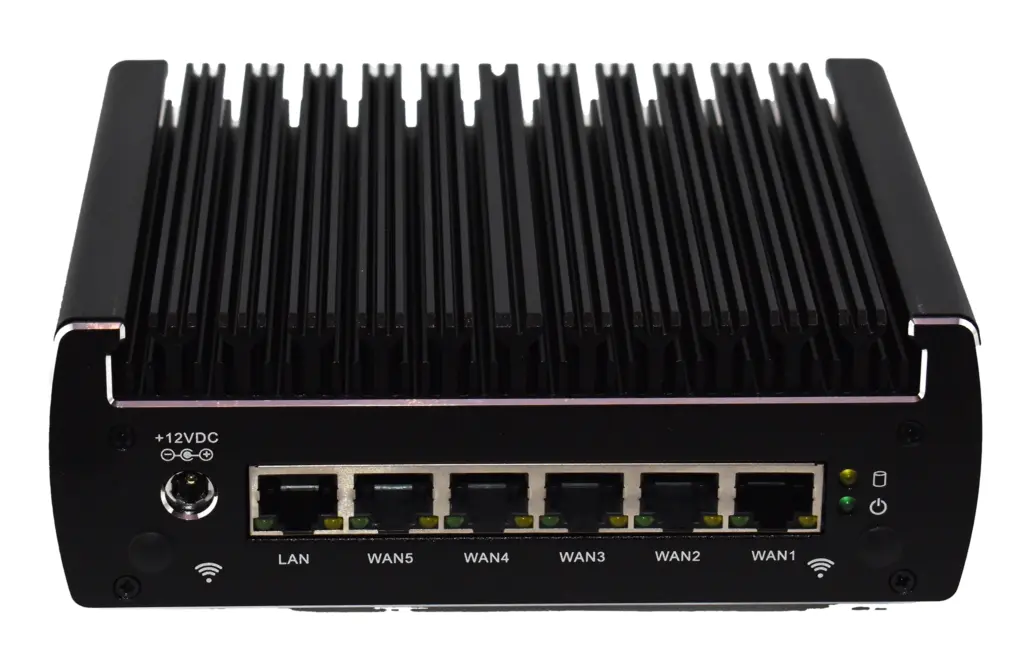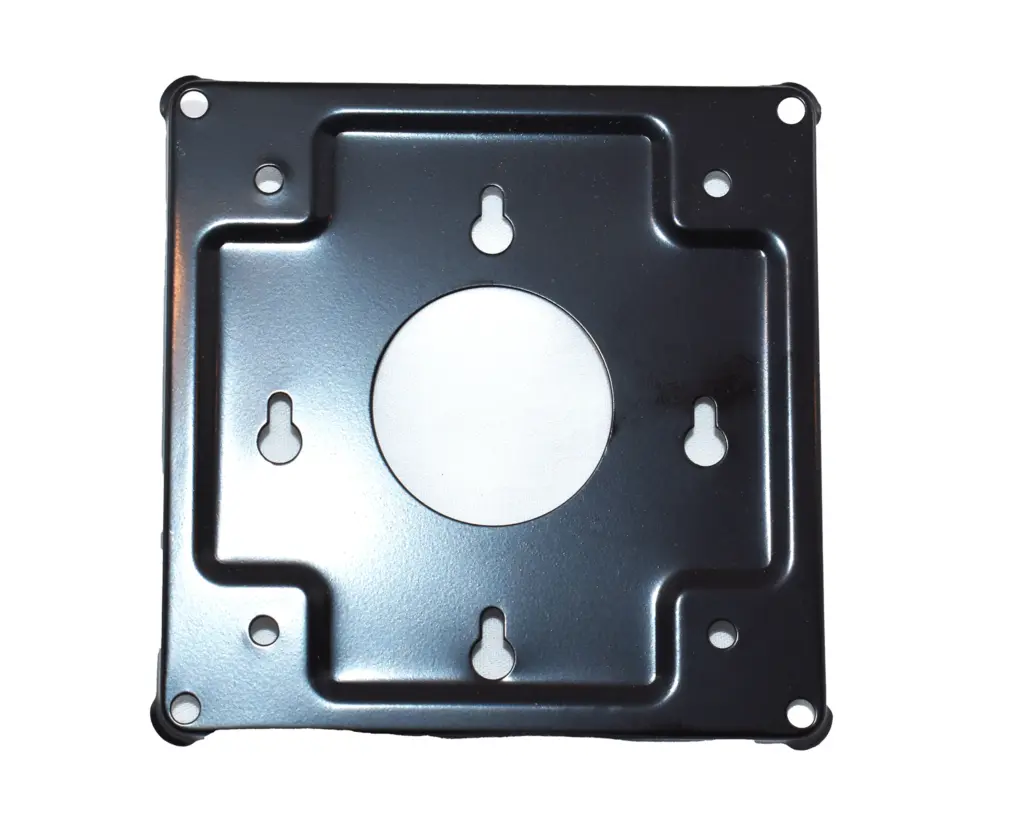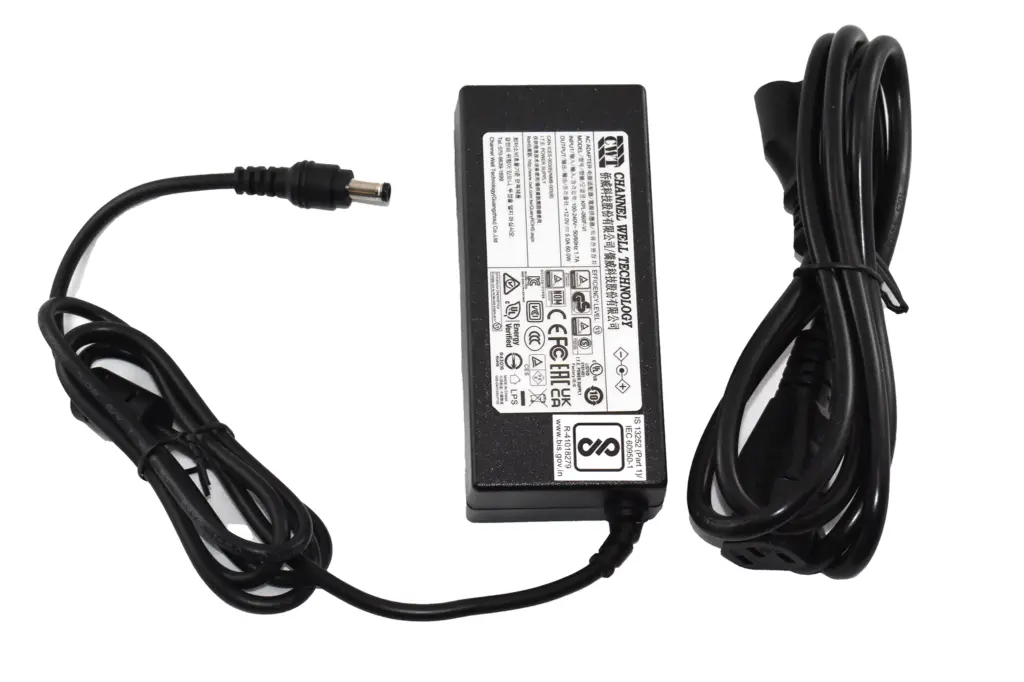This is an early look at the Blender. If you’re interested, expect a lot more content in the coming days and weeks as I put the Blender through its paces.
Sometimes, there’s a thing that does its job so well, it doesn’t matter that it only does one job. Marine Data Systems’ Blender might just fit that description. A test unit just hit my desk, and I didn’t want to wait before giving you my first impressions.


This is an incredibly solid unit. Everything you see above is metal. I don’t think there’s bit of plastic on this thing except the power button. It’s heavy, too. I’m guessing that has to do with the massive heat sink at the top of it. Those grooves aren’t there just for show.


You also get a mounting plate and a fairly stock standard power supply with a beefy cable. Overall this device is well-built and should work great.
Like I said, this is a one-trick pony. But it does that trick pretty darn well, from the demonstrations I’ve seen. You can connect up to five internet sources and it will intelligently choose the right one. It’s not just going on speed, either. The unit is built to work with Starlink, wireless access points, and 5G cellular routers. Those are the things you’ll find if you’re on a boat. There’s usually some sort of Wi-Fi at the marina. You can get cell service up to 10 miles offshore. Beyond that you’ll need satellite internet. This device recognizes all of these services and helps you make the most of them.
Remember that marine Starlink is not unlimited and depending on where you are, you might find that there are sometimes speed drops. At the same time, most cellular data plans are capped as well and speeds decrease steadily as you get further from a tower. The Blender takes all that into account and delivers the best possible experience to the user.
There’s a lot to like about the Blender but so far I’m not privy to how it does any of the magic it does. The manufacturer charges a monthly fee for the “blending” service and I’m presuming this includes special algorithms that make the device work as well as it does. The number of user-selectable options seem fairly small. The device can be controlled via app, but those apps are not in wide release just yet.
In the coming days and weeks I’ll be working with a fully operational Blender. Even though I’ll be on land, I’ll be giving it a full workout every way I can. I’ll tell you if it lives up to the hype in my installation. I fully expect it to, though. From what I see it’s a really excellent piece.
In the meantime, if you want to know more about the Blender or any of the other excellent marine internet solutions we offer, call the experts at Signal Connect! We’re here for you during East Coast business hours. Call us at 888-233-7563 or fill out the form below. We’ll get right back to you!
The post Introducing Marine Data Systems Blender! appeared first on The Solid Signal Blog.
Continue reading...
Sometimes, there’s a thing that does its job so well, it doesn’t matter that it only does one job. Marine Data Systems’ Blender might just fit that description. A test unit just hit my desk, and I didn’t want to wait before giving you my first impressions.
The Blender unit


This is an incredibly solid unit. Everything you see above is metal. I don’t think there’s bit of plastic on this thing except the power button. It’s heavy, too. I’m guessing that has to do with the massive heat sink at the top of it. Those grooves aren’t there just for show.


You also get a mounting plate and a fairly stock standard power supply with a beefy cable. Overall this device is well-built and should work great.
But what does it do?
Like I said, this is a one-trick pony. But it does that trick pretty darn well, from the demonstrations I’ve seen. You can connect up to five internet sources and it will intelligently choose the right one. It’s not just going on speed, either. The unit is built to work with Starlink, wireless access points, and 5G cellular routers. Those are the things you’ll find if you’re on a boat. There’s usually some sort of Wi-Fi at the marina. You can get cell service up to 10 miles offshore. Beyond that you’ll need satellite internet. This device recognizes all of these services and helps you make the most of them.
Remember that marine Starlink is not unlimited and depending on where you are, you might find that there are sometimes speed drops. At the same time, most cellular data plans are capped as well and speeds decrease steadily as you get further from a tower. The Blender takes all that into account and delivers the best possible experience to the user.
The secret sauce is… secret
There’s a lot to like about the Blender but so far I’m not privy to how it does any of the magic it does. The manufacturer charges a monthly fee for the “blending” service and I’m presuming this includes special algorithms that make the device work as well as it does. The number of user-selectable options seem fairly small. The device can be controlled via app, but those apps are not in wide release just yet.
Coming soon: a lot more information
In the coming days and weeks I’ll be working with a fully operational Blender. Even though I’ll be on land, I’ll be giving it a full workout every way I can. I’ll tell you if it lives up to the hype in my installation. I fully expect it to, though. From what I see it’s a really excellent piece.
In the meantime, if you want to know more about the Blender or any of the other excellent marine internet solutions we offer, call the experts at Signal Connect! We’re here for you during East Coast business hours. Call us at 888-233-7563 or fill out the form below. We’ll get right back to you!
The post Introducing Marine Data Systems Blender! appeared first on The Solid Signal Blog.
Continue reading...

